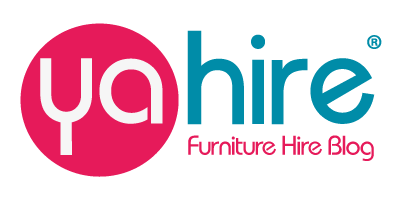
Rent vs. Hire: Understanding the Differences in Furniture Rental Terminology
Nowadays, furniture rentals are very popular among event planners and people who need temporary home arrangements. It is a cost-effective, practical and convenient option that can be extremely helpful in many situations. If you plan to host a party or a conference, you will definitely need some help from furniture rental companies. Maybe you’re on a work trip and need some pieces to make your temporary stay comfortable. If you’re opening a brand-new office and need a setting, this is a reasonable solution. In all these scenarios, you hire furniture. Why? Because it is the easiest way to solve the problem. As you know, Yahire is an award-winning furniture hire company that offers various options for all types of events. Our customers often mix the terms rent and hire when they ask for help from us. That is why we decided to discuss the differences between these two. After reading today’s blog, you will never be confused about using appropriate furniture rental terminology.
Rental vs. Hire
So, what is the difference between renting and hiring furniture? You’ve probably thought it is the same type of service, but there is a slight distinction, and we’re here to tell you what it is exactly. Basically, the main difference between renting and hiring is the duration and ownership. Rentals involve the temporary use of pieces, typically for a fixed period, where the rental company retains ownership throughout. On the other hand, hiring furniture implies a more service-oriented approach, where the hiring company retains ownership, and the hirer pays to use the furniture for a specified time. Essentially, rentals are more focused on short-term usage, while hires provide a flexible option for short- and long-term needs.
Let’s review some of the distinguishing features of rentals and hires below:
- Duration – As we have discussed already, duration is the main difference between renting and hiring services. While rentals are usually available for a fixed short period of time, hires can be maintained for both the short and long term. It can be hourly, daily, weekly or monthly, depending on your needs.
- Ownership – The policies for renting and hiring furniture are also different. Renting involves fewer ownership responsibilities than hiring.
- Customisation and Return Policies – For renters, customisation options are often limited, as the furniture remains the rental company’s property. In contrast, hirers have more freedom in customising the furniture to suit their needs, given that they retain ownership during the hire period.
- Cost and Payment Structure – For rentals, costs typically involve rental fees for the duration of use, along with any additional charges such as delivery or installation fees. Payment structures for rentals often include upfront fees or deposits, with the possibility of paying for additional services as needed. On the other hand, hirers typically pay for the use of furniture based on hourly, daily, weekly, or monthly rates, with additional costs such as delivery and pickup fees.
Benefits of Rentals and Hires
Rentals and hires are both popular options nowadays. They offer different kinds of conveniences to the customers. So, how should you decide which one is the right solution for you? We’ve already discussed some of the distinguishing features that can be useful when deciding. Let’s go further and discover more benefits of renting and hiring tables and chairs. Rentals usually offer convenience and flexibility for short-term needs. For this reason, they are ideal for events, temporary living situations, or short-term projects. They eliminate the need for long-term commitments and provide hassle-free solutions with services like delivery, setup, and pickup included. On the other hand, hires provide cost-effectiveness and customisation options, making them suitable for long-term usage or specific needs where ownership and customisation are essential. Based on these factors, you can make a decision about which one is the right suit for you.
Final Thoughts
We hope our blog helped you understand the difference between renting and hiring furniture. From now on, you will never mix these terms up. Using appropriate furniture rental terminology will help you avoid any confusion. Considering the distinctive features of rentals and hires, you can make informed decisions. For a shorter period of time, we recommend you lean towards rentals, while hiring solutions will be the best for both short and long-term periods. With this clarity, you’ll definitely find a suitable match for your needs.
